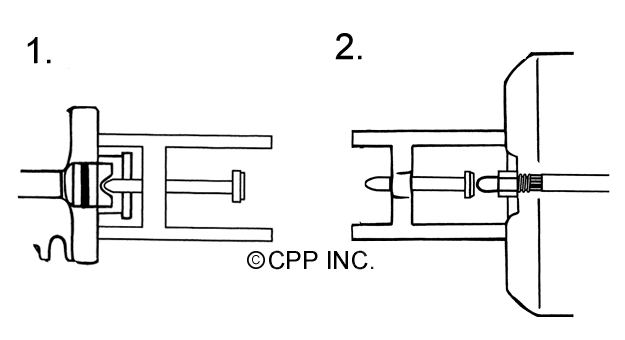Can someone tell me what constitutes a defective power brake booster? I added disc brakes to the front and with drums on rear. The booster,m/c (Corvette style) and disc/drum prop. valve are all new. All lines have been bled more than once.Didnt buy these as a kit. With my car running,the pedal goes 2 inches from the floor before any sign of braking. After I stop the motor,I have about 1/2 pedal. If I disconnect the check valve at the booster to release vaccuum,which by the way is 15 in. at the valve, the pedal goes to the floor. I have replaced the prop. valve and m/c again with same results.Can the booster be bad? any suggestions Please.




 Reply With Quote
Reply With Quote
 There are basically two different master cylinders that we use for our Chevy and Ford kits, the Deep Bore master cylinder and the Shallow Bore master cylinder. To determine which master cylinder your booster is setup to mate with, you can do the following simple check. For Shallow Bore master cylinders, the pushrod should be approximately flush with or below the booster face. Deep Bore master cylinders will protrude past the face of the booster body by about 1" to 1-1/2". Note that Deep Bore master cylinders are required for manual brakes and Shallow Bore master cylinders are generally used for power brake systems. We now supply a master cylinder piston adapter to accommodate both master cylinders. You will only use this adapter when you have a Deep Bore master cylinder with a short booster pushrod.
There are basically two different master cylinders that we use for our Chevy and Ford kits, the Deep Bore master cylinder and the Shallow Bore master cylinder. To determine which master cylinder your booster is setup to mate with, you can do the following simple check. For Shallow Bore master cylinders, the pushrod should be approximately flush with or below the booster face. Deep Bore master cylinders will protrude past the face of the booster body by about 1" to 1-1/2". Note that Deep Bore master cylinders are required for manual brakes and Shallow Bore master cylinders are generally used for power brake systems. We now supply a master cylinder piston adapter to accommodate both master cylinders. You will only use this adapter when you have a Deep Bore master cylinder with a short booster pushrod.
